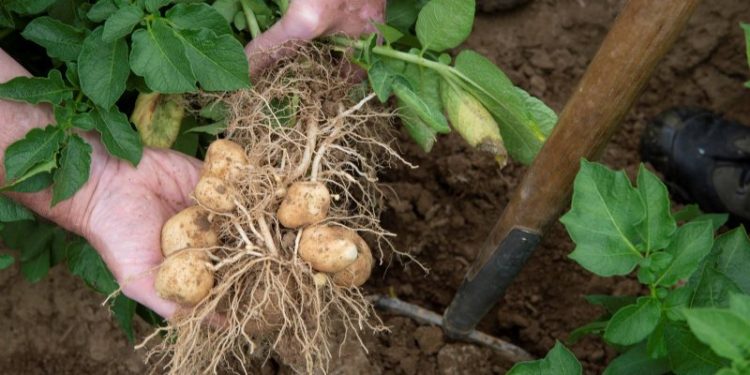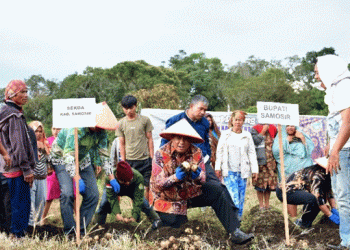In this article, we delve into the misconception that a larger cultivated area automatically translates to a higher potato harvest. By analyzing the latest data from reliable sources, we uncover the factors that truly influence potato yields and provide valuable insights for farmers, agronomists, agricultural engineers, farm owners, and scientists involved in the field of agriculture.
According to a recent report by Nieuwe Oogst, the Dutch agricultural news outlet, a larger cultivated area does not necessarily guarantee a bigger potato harvest. While it is commonly believed that expanding the acreage of potato cultivation will lead to increased yields, several other crucial factors play a significant role in determining the outcome.
Data from studies conducted by agricultural experts reveals that soil quality, irrigation techniques, pest and disease management, crop rotation, and appropriate fertilization practices are among the key factors that directly impact potato yields. Neglecting these factors or assuming that a larger land area alone will result in a higher harvest can lead to disappointing results and economic losses.
Soil quality is of paramount importance when it comes to potato cultivation. It directly affects nutrient availability, water-holding capacity, and the overall health of the plants. Research has shown that implementing proper soil testing and analysis, followed by suitable amendments and maintenance, can significantly enhance potato yields.
In addition to soil quality, irrigation plays a crucial role in potato production. The right amount of water at the right time is critical for optimal growth and tuber development. Over-irrigation can lead to waterlogged soils, increased disease pressure, and reduced yields, while under-irrigation can stunt plant growth and decrease tuber size. Implementing efficient irrigation systems, such as drip irrigation or precision sprinklers, can help farmers achieve better water management and subsequently improve yields.
Another crucial aspect is pest and disease management. Potatoes are susceptible to various pests and diseases, including late blight, Colorado potato beetle, and nematodes, which can significantly impact yields if not adequately controlled. Integrated pest management (IPM) practices, including crop rotation, biological control agents, and judicious use of pesticides, can help mitigate these threats and minimize yield losses.
Crop rotation is an effective strategy to break disease cycles and maintain soil health. Alternating potato crops with non-host crops can reduce the buildup of pathogens and pests in the soil, resulting in healthier plants and higher yields. Furthermore, appropriate fertilization practices based on soil nutrient requirements can ensure optimal plant nutrition, vigorous growth, and improved tuber development.
In conclusion, although expanding the cultivated area may seem like a logical step towards achieving higher potato yields, it is essential to consider other critical factors that directly influence production. Soil quality, irrigation techniques, pest and disease management, crop rotation, and fertilization practices play vital roles in determining the success of potato cultivation. By focusing on these aspects and implementing proper agricultural strategies, farmers can maximize their yields and ensure sustainable potato production.
Tags: Agriculture, Potato Cultivation, Yields, Soil Quality, Irrigation, Pest Management, Disease Control, Crop Rotation, Fertilization, Sustainable Farming.








